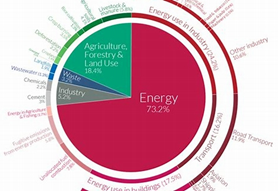6.11 Discussion: What are the future climate risks where you live?
My country Sierra Leone has been considered as one of the vulnerable countries to suffer from the impacts of climate change and exposed to further risks. Sierra Leone is projected to experience a range of impacts from climate change in the coming decades, including increased temperatures, changes in precipitation patterns, and more frequent extreme weather events such as droughts and floods. The country is within west Africa, and for any huge impact may affect the country. The Intergovernmental Panel on Climate Change (IPCC) report for west Africa countries, including Sierra Leone on temptation rise are projected to increase by between 1.5°C and 3°C by mid-century (IPCC, 2018). This increase in temperature will affect the following significant sectors in Sierra Leone. Agriculture: Sierra Leone population rely on agriculture as source of food and livelihoods, The country is richer with underground and surface water resources for drinking and industrial activities. These qu...
